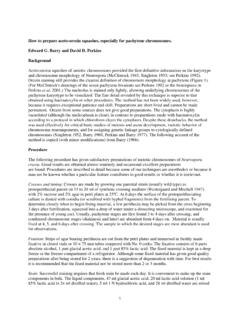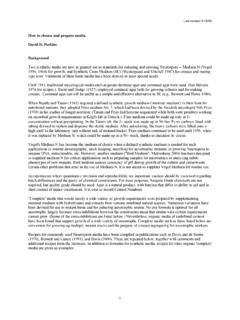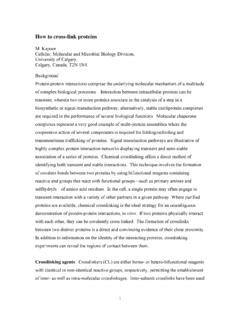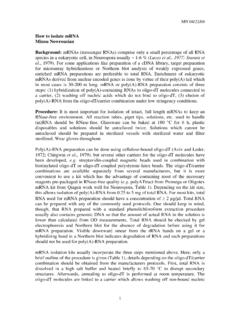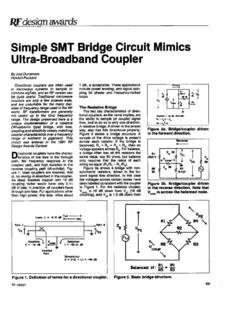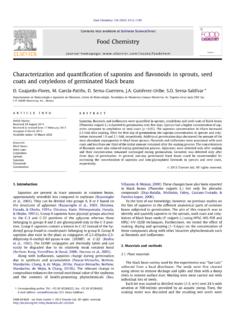Transcription of How to preserve stocks. David Perkins Background
1 Post. McC, DDP revision,10 Oct 05 1 How to preserve stocks . David Perkins Background Storage of stock cultures in suspenced animation is essential, both for wild type references and for mutant strains. Not to do so compromizes their integrity. Cultures stored at 5 C must be transferred and regrown periodically to maintain viability. Each cycle of storage and regrowth presents an opportunity for mutation and selection. With certain auxotrophs ( methionine, cysteine, adenine requirers), double mutants with additional blocks in the same biosynthetic pathway are at a selective advantage and accumulate as metabolizing cultures are stored and The simplest way to avoid trouble is freezing at -20 C ( Perkins 1973).
2 This is highly effective for conidiating cultures, which remain viable for several years without growth or transfer. However, nonconidiating strains do not survive freezing and thawing, and viability of conidiating cultures depends on keeping the conidia dry. Lyophylization is highly effective, assuring long-term servival (Barratt and Tatum 1950. Wilson 1986. McCluskey, 2000). However, the method is laborious and is difficult to use with many nonconidiating strains. Also, each individual tube can be sampled only once. Preservation on anhydrous silica gel is usually the method of choice, especially for vigorous conidiating cultures ( Perkins 1962, 1977.)
3 Wilson 1986. Metzenberg 1994. Brockman and de Serres 1962, Catcheside and Catcheside 1979. Kolmark 1979. Smith 1979). It is effective for relatively long periods and is less laborious than lyophylization. Individual tubes can be sampled repeatedly. Silica gel can be used to preserve at least nonconidiating strains, but only with special effort, using suspensions of mulled mycelia or preparing as described by Metzenberg. (1994) (see below). As a last resort, difficult strains may be stored at dry-ice or liquid-nitrogen temperatures (Wilson 1986. Jong and Davis 1979.
4 Pounder and Bowman 1999). See, for example, How to work with slime and other cell wall-deficient strains. Silica gel and lyophylization are preferred as standard methods not only because they ensure viability over long periods, but also because (unlike with cryopreservation and methods dependent on refrigeration) they are not vulnerable to power outages and are not dependent on an uninterrupted supply of dry ice or liquid nitrogen. Strains that are aconidiate, poorly viable, or difficult to grow can often be carried in sheltered condition in combination with a "helper" strain that complements the defect and produces a conidiating heterokaryon which can be readily preserved using standard methods ( Perkins 1984, 1993.
5 Metzenberg and Sachs 2002). See How to use helper strains for maintaining and crossing handicapped recessive mutants, for forcing and resolving heterokaryons, and for determining heterokaryon compatibility. Procedures Silica gel: The following account of current FGSC usage by Kevin McCluskey updates and supercedes the description published by Wilson (1986): "The FGSC uses 12-28 Mesh, Grade 408 silica gel, without indicator. We dispense about g of silica gel into a 13 100 mm screw cap tube and plug the opening with cotton. These are sterilized by baking at >150 C overnight.
6 The sterile tubes are maintained in a 75 C oven to keep them dry. To prepare silica gel stocks , a culture of the strain of interest is grown in a 13 100 mm tube on appropriately supplemented agar solidified medium for seven to ten days. One to two ml of 7% reconstituted Carnation brand nonfat dry milk is added to the tube and the surface of the slant is scraped with a sterile loop or spatula. Vigorus vortexing can also be used, but tends to fill the air-space of the tube with a cloud of spores making subsequent handling difficult. Silica gel blanks are capped tightly with sterile caps and pre-chilled in ice.
7 350 to 500 l of spore suspension is drawn up into a pasteur pipette and dispensed into Post. McC, DDP revision,10 Oct 05 2 the chilled silica gel trying to spread the solution onto as much silica gel as possible. The tube is capped and vortexed vigorously for one to two minutes, breaking up any clumps in the process. The new stock is returned to ice prior to being placed in a box over dessicant at 5 C. After a week or more, the new stock is tested for viability before being moved to the main storage series. "The sterile milk is prepared by suspending g milk powder in 50 ml of deionized water.
8 This is sterilized in a pressure cooker at 15 pounds for 20 minutes. Sterilizing at higher pressure in the autoclave carmelizes the milk. The prepared milk is kept in the refrigerator." Procedures used at Stanford ( Perkins 1977) differ in minor respects. (1) Culture tubes (13 100 mm) without screw caps or a constricted neck are easier to fill. They are plugged with cotton, sterilized by baking as described above, and stored above dessicant in a dessicator, at room temperature. After introduction of the cell suspension, the cotton plug is trimmed flat and each tube is sealed with two precut squares of Parafilm.
9 (2) By growing cultures on slants made up with 4% agar, conidia can be suspended in the original culture tube, where the stiff agar remains intact during vortexing. (3) Nonfat milk is dispensed to small tubes and sterilized in a pressure cooker for 10 minutes at 5 pounds pressure on two successive days. The following streamlined variations devised by Metzenberg (1994) seem promising, especially for fluffy and other nonconidiating or poorly conidiating strains. "The method for storing Neurospora strains described by Perkins (1962, 1977) and elaborated in a collection of articles in Neurospora Newsletter 26 has made it possible to keep large collections with much less effort than would be required with the older lyophil method.
10 In Perkins ' method, conidia are suspended in sterilized nonfat milk and the suspension is pipetted onto chilled sterile silica gel. For nonconidiating strains, mycelia are mulled or otherwise fragmented in milk to make the suspension. However, even this greatly improved method requires a nontrivial amount of manipulation when large numbers of strains are to be preserved, especially for nonconidiating strains. Preparing each stock consumes a pipet and at least two test tubes: one for growth of the strain and one for preservation. Both tubes need to be labelled, which adds to the effort and to the chance of error.

